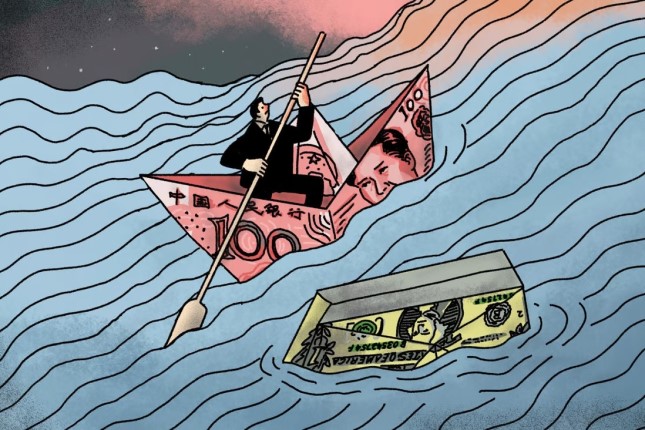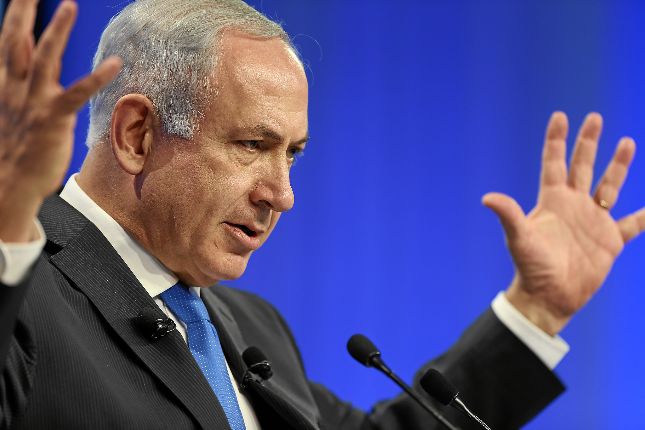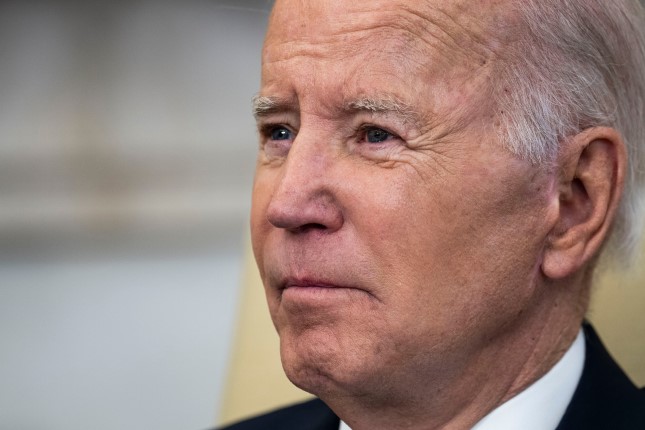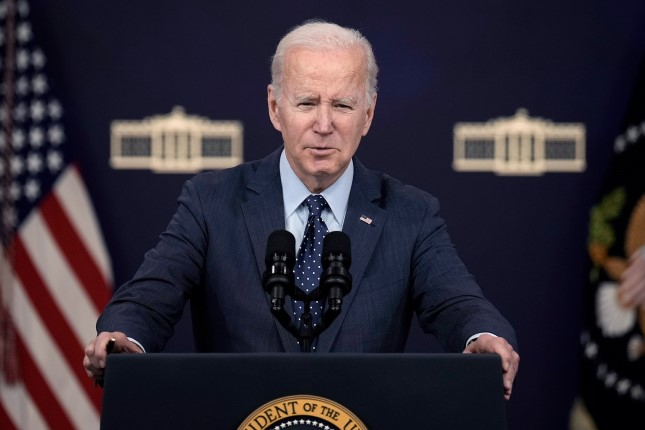As investors around the world held their breath last month pending a political compromise on the United States’ US$31.4 trillion debt ceiling, International Monetary Fund (IMF) managing director Kristalina Georgieva was among those hoping for a good outcome as the clock ticked closer to the deadline.
Monday was the date when the US government could have run out of cash to pay its debts, a scenario that would have significantly weakened America’s sovereign credit rating and global trust in the US dollar, opening up more opportunities for China.
“The world is watching,” Georgieva said on May 26 after the IMF’s annual assessment of the US economy and financial system.
“We think of the US Treasury market as an anchor for the global financial system; and this anchor needs to hold something solid.”
The 190-member fund, a key part of the US-led global financial system, has increasingly looked east. In March, Georgieva applauded China for potentially contributing 30 per cent of global economic growth this year, something it has done consistently since the 2007-08 global financial crisis.
Similar to that crisis, which prompted the start of Beijing’s yuan internationalisation efforts in 2009, analysts said the months-long US debt ceiling stand-off, together with US decoupling threats and a succession of US interest rate increases, could be a defining moment for the Chinese currency.
“International financial stability is in China’s advantage, but does it have to be US led?” said Professor Liang Yan, an economist at Willamette University in the US state of Oregon.
“It has been proven that the US is not a great leader in this system.”
Aggressive interest rate increases by the US Federal Reserve – totalling 500 basis points in the past 14 months – have been a sword hanging over many emerging markets, and they have had to scramble to reinforce their foreign exchange reserves and economic foundations to ride out Washington’s onslaught on high inflation.
As China recovers from the economic impact of the Covid-19 pandemic, analysts said the country had several tools – including yuan investment in Belt and Road Initiative projects, yuan settlement with major trading partners, promotion of the digital yuan and non-dollar reserve diversification – that could chip away at the US dollar-driven world financial order.
The Chinese economy, the world’s second largest, is moving away from an export-reliant model to one more focused on domestic consumption and a hefty dependence on imports of goods such as oil and food.
That would entail a shift from a US-centric financial mechanism that saw China attract US dollar investment in export-oriented factories and then use the US dollars it earned to invest in low-yield US Treasury bills.
“China believes the US-led system, especially the hegemony of the US dollar, includes rules that play against China’s interests,” said Sun Yun, director of the Washington-based Stimson Centre’s China programme.
“Therefore, to gradually undermine US credibility and revise that system is in China’s long-term interest.”
However, Sun said, the yuan could not replace the US dollar “in the foreseeable future”.
The step-by-step approach suggested by many analysts largely reflects their concerns over Beijing’s capital account controls, which limit the convertibility of the yuan.
“The biggest single obstacle to that goal is not just the entrenched role of the US dollar, but also key is Beijing’s unwillingness to take its hand off its financial system and loosen the capital account,” said Dexter Roberts, director of China affairs at the Mansfield Centre at the University of Montana.
“Until it does that – a move which by definition means lessening party control over the economy and allowing for example, independent banks to decide where to lend, and that could lead to capital flight – other countries will not be willing to hold substantial yuan reserves.”
Analysts at Ping An Securities said the Chinese government was taking a conservative stance in reforming its monetary regime – one that could give the yuan more flexibility in international use.
“Regarding the yuan, the Chinese government has always emphasised the orderly promotion of yuan internationalisation, and will not actively seek to replace the US dollar in the short term, and will be more cautious about the risks brought about by rapidly opening up its financial market,” they said at the end of last month.
Beijing has not released a road map or timetable for its yuan ambitions.
A more realistic objective than replacing the US dollar, and one that is frequently cited by Chinese scholars and policy advisers, is for international use of the yuan to reflect China’s 18 per cent share of global gross domestic product.
Among the major parameters measuring whether the yuan is an international currency, its 12.28 per cent weighting in the IMF’s special drawing rights basket is the closest to that mark, compared with 2.29 per cent for international payments, 4.72 per cent of trade finance and 2.69 per cent of central bank reserves.
China might now find wider support for its ambitions to counterbalance the US-led financial system. Analysts said they expected frustration outside the US with recurring debt ceiling issues and perceptions of US protectionism would steer global finance away from the US currency – but not fully or right away.
Progress has been seen in trade settlements between China and its developing partners, an area where Beijing has been able to leverage its trade advantage to quickly increase the use of the Chinese currency.
Eight countries, including Russia, Brazil, Argentina, Saudi Arabia and Thailand, have accepted yuan as payment for oil, gas and a nuclear power plant, and that momentum is set to grow thanks to major trade agreements and China’s involvement in the BRICS – a bloc that also comprises Brazil, Russia, India and South Africa.
That increased internationalisation of the yuan would simultaneously reduce China’s accumulation of US dollar reserves.
Beijing has also spearheaded overseas projects such as roads, railways and airports under the 10-year-old Belt and Road Initiative as a way to smooth trade and investment, accelerating flows of yuan to more than 60 countries in Asia, Africa, eastern and central Europe and South America.
“China definitely wants to diversify and that’s been in the making,” Liang said.
It might consider increasing the proportion of assets denominated in euros or the Japanese yen in its foreign exchange holdings, while auction rate bonds – debt securities with adjustable interest rates – could offset US Treasury bonds, she added.
Late last week, both houses of the US Congress passed a deal between US President Joe Biden and Kevin McCarthy, the Republican speaker of the House of Representatives, that featured a suspension of the debt ceiling until January 2025 in return for cuts to non-defence discretionary spending next year and growth of just 1 per cent in 2025.
Despite widespread criticism of US dollar hegemony, Wang Jinbin, deputy dean of Renmin University’s school of economics, said there was currently no strong alternative to US treasuries for international investors despite concerns over recurring US debt crises.
“The demand for US debt will change with the changes in geopolitics and economic and trade patterns,” Wang said in a university blog post last month.
“[It] depends on the emergence of other government bonds that can effectively replace US debt in the international financial market.”
China is the second-largest holder of US government debt, behind Japan. China held US$869.3 billion worth of such debt in March, up from US$848.8 billion in February, with US government bonds accounting for about 27 per cent of China’s foreign exchange reserves.
March marked the first time China had raised its holdings of US debt following seven months of reductions that saw its exposure drop to the lowest level in nearly 13 years. Its investment in US treasuries peaked in 2014 and has been declining slowly ever since.
“We expect a more multipolar currency system to emerge over the next few decades, but it will be led by the [US dollar] because its challengers will struggle to replicate its scale, safety and convertibility in full,” Moody’s Investors Service macro research assistant vice-president Gabriel Agostini said at the end of last month.
“Our view could change, however, if confidence in US institutions wanes, economic sanctions multiply [and] protectionism rises.”
Photo: As the US government flirted with a debt default last month, some analysts see more opportunities opening up for China and the yuan © Brian Wang.
Source: South China Morning Post.
































